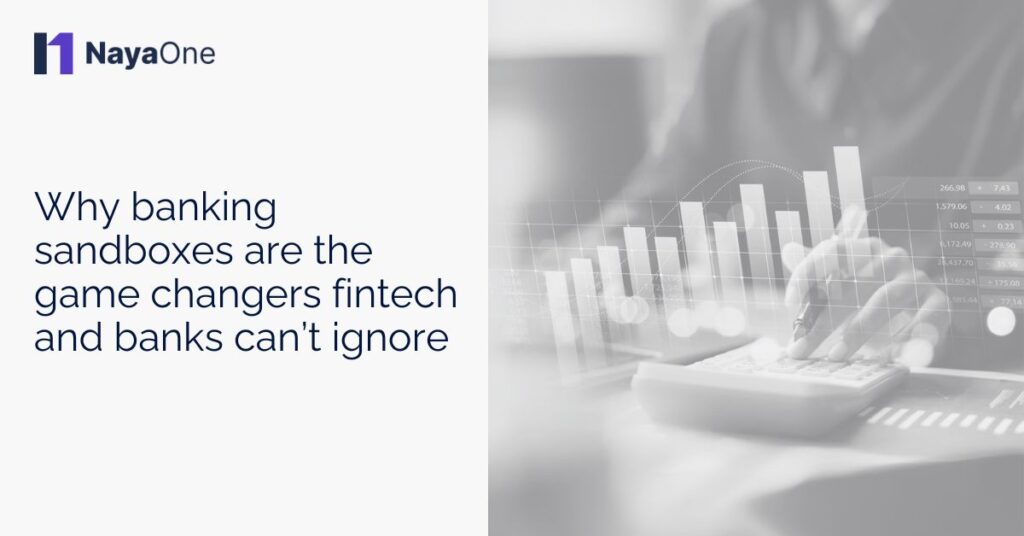Innovation in banking isn’t just a nice-to-have anymore; it has become essential for survival and growth. Yet testing new ideas in financial services can be tricky because of strict regulations, security concerns and complex legacy systems. That is where banking sandboxes come in.
These controlled environments are revolutionising how banks and fintech companies bring new products to life, both safely and quickly. But what exactly makes them so valuable? And how can your organisation get the most out of a sandbox?
Let’s unpack this important topic in detail.
What problems do banking sandboxes actually solve?
Launching new financial products without risking compliance breaches or losing customer trust is a tough balancing act. Traditionally, development and rollout often get bogged down by regulatory hurdles and lengthy approval cycles. This slows innovation and can cause companies to miss out on market opportunities.
Sandboxes tackle this challenge head-on by offering a dedicated space where innovations can be tested under real-world conditions but without the risks that come with full production environments. They reduce the cost and complexity of experimentation by creating a safe zone to try, fail and learn.
This means that instead of treating innovation like a high-stakes gamble, organisations can approach it as a manageable, learnable experience. The sandbox allows teams to refine products and processes before they ever touch real customers. This leads to better outcomes, fewer surprises and a smoother launch.
More than that, sandboxes encourage a culture of continuous improvement. When teams know they have a secure place to test ideas, they become more willing to experiment and push boundaries. That shift alone can turbocharge innovation within banks and fintech firms alike.
How do sandboxes help fintechs and banks collaborate better?
One of the biggest barriers to fintech innovation has been the divide between startups and traditional banks. Fintechs tend to be fast, nimble and experimental. Banks, on the other hand, often operate within strict rules and risk controls and can be more cautious.
Banking sandboxes create a shared playground where both sides can come together and test solutions collaboratively. They build trust by providing transparency and a controlled environment where ideas can be proven without putting core systems or customers at risk.
This shared space accelerates the integration process. Instead of fintechs building products in isolation only to face complex onboarding from banks later, they co-create from the start. Banks gain insight into the technology, while fintechs learn about compliance needs and operational constraints.
Collaboration in the sandbox also improves product-market fit. By involving multiple stakeholders early, products are more likely to meet regulatory standards and customer expectations by the time they reach live environments.
This model of co-creation is quickly becoming a blueprint for successful fintech partnerships. It moves innovation from a series of disconnected steps into a unified process that benefits everyone involved.
What does success look like in a banking sandbox?
Success in a sandbox goes beyond simply launching a product faster. It means using the environment to learn what works, gather feedback and adapt quickly based on real insights.
Effective sandbox use involves rigorous testing, collecting meaningful data and making data-driven improvements. Teams can test a variety of scenarios, including edge cases that are difficult to simulate elsewhere.
At the same time, organisations must maintain compliance throughout the sandbox process. Regulatory standards cannot be an afterthought. Successful players design their testing with compliance embedded from the beginning. This approach reduces friction when moving from sandbox to production.
Another key to success is preparing a clear path for scaling innovations from the sandbox to full live deployment. This includes technical readiness, operational processes and staff training.
The best organisations view the sandbox not as a one-time trial but as an ongoing innovation tool. By continually testing and iterating within the sandbox, they stay ahead of changing customer needs and regulatory expectations.
What should organisations watch out for when using sandboxes?
While banking sandboxes offer many advantages, they are not a cure-all. Organisations should be mindful of several potential challenges.
Data security is a top priority. Even though sandboxes are controlled environments, they often handle sensitive financial information. Robust safeguards must be in place to prevent leaks or misuse.
Another challenge is setting clear expectations about the scope and timing of sandbox projects. Sometimes innovators hope for quick wins, but sandbox testing can require patience and iterative cycles.
Organisations also need to ensure that internal teams are aligned with sandbox goals and outcomes. Without good communication, sandbox learnings can be lost or ignored when returning to live systems.
There is a risk that sandbox success leads to a false sense of security. What works in the controlled environment may not fully translate to production without additional adjustments.
Finally, governance is essential. Clear roles and responsibilities must be defined among fintechs, banks and regulators to avoid misunderstandings and ensure compliance throughout.
How can your organisation get started with a banking sandbox?
Getting started with a sandbox begins with identifying your key innovation priorities and selecting projects that align well with sandbox capabilities. It is important to choose initiatives that are suitable for safe testing but meaningful enough to deliver value.
Early engagement with stakeholders is critical. This includes compliance, risk, IT and business teams. Building trust around the sandbox process helps smooth approvals and encourages collaborative problem solving.
Next, look for sandbox programmes or platforms that fit your needs. Many regulators now offer official sandbox environments with built-in regulatory guidance. There are also private providers offering bespoke sandbox solutions tailored to different markets or product types. One standout example is NayaOne, which provides a secure and flexible digital sandbox environment designed specifically to help financial organisations test innovations quickly and safely.
Finally, cultivate a culture that values learning through experimentation. Encourage teams to view failures as opportunities and to iterate rapidly based on results. This mindset will maximise the benefits of sandbox testing and drive ongoing innovation.
Sandboxes are transforming the way financial services innovate. They take the risk out of experimentation and create a clear path from idea to launch. Organisations that embrace this approach will not only improve their products but also build stronger partnerships and greater customer trust.
Those ready to explore a banking sandbox will find themselves better equipped to navigate the evolving financial landscape with confidence and speed.





